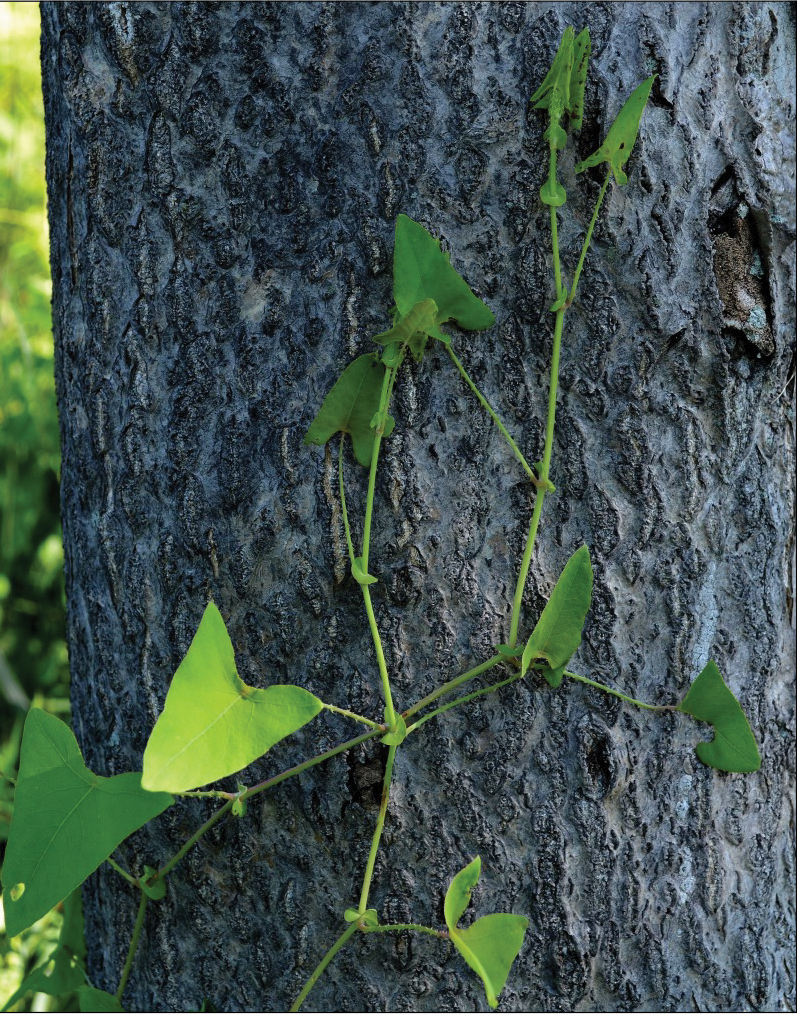Alert: New Mile-A-Minute Infestation Found in Woodstock
Mile-A-Minute (Persicaria perfoliata) is a highly invasive, herbaceous annual vine native to eastern Asia. It was unintentionally introduced via contaminated soil into the United States in Pennsylvania and Maryland in the 1930’s.
It is a very aggressive invader, earning its common name by its fast growth — the plant can climb up to six inches a day! It grows as a vine, using its spines to climb over other plants, and it reproduces by seed.
Mile-a-minute weed is a prolific seeder. It flowers from late summer through October, so can produce many fruit during one season. Fall frost kill the vines, but the seeds overwinter in the soil. Seeds can be viable in the soil for up to 6 years and germinate at a high rate. Ugh.
Mile-a-minute colonizes disturbed areas along forest edges, wetlands, stream banks and roadsides. It thrives in full sun and prefers high soil moisture. Mile-a-minute outcompetes native species by its rapid growth and its ability to grow over other plants and steal their sun. It often grows in streamside habitats and because the seeds can float, the seeds can be carried downstream, which spread the plant to previously un-infested areas. The main vector for seed dispersal are birds that eat the fruits and deposit the seeds in their droppings, as well as other animals that ingest the seeds and distribute them in their travels.
Mile-a-minute vines have alternate, light green triangular leaves, 4 to 7 cm long and 5 to 9 cm wide. The vines are light green and become reddish as they mature. The vine stems and the undersides of leaves are covered with recurved barbs that help it to hold onto objects and climb. A unique feature of mile-a-minute is that it has 1-2 cm diameter round, flat leaves, called “ocreae,“ which circle the stems at the nodes. Ripe fruits are blue.
The newly discovered population of this plant in the Town of Woodstock is spread over an area of about ¾ acre. Catskill Regional Invasive Species Partnership (CRISP) staff are working with the landowner to treat this population and are concerned that there may be other populations. Mile-a-minute is widespread in the lower Hudson Valley, but this is only the second population that we know about in the CRISP region, with the other CRISP infestation along the Delaware River. The closest known population to the Woodstock patch is 18 miles away in the Town of Esopus, outside of the CRISP region, in the Lower Hudson Partnership for Regional Invasive Species Management region.
With early detection, eradication is possible. Volunteers and home owners are enormously important to slowing the spread of this aggressive invasive plant. We need your eyes to spot and report new patches of Mile-A-Minute.
If you think you have Mile-A-Minute on your property or would like to volunteer to help with control projects, please contact The Catskills Regional Invasive Species Partnership (CRISP)

